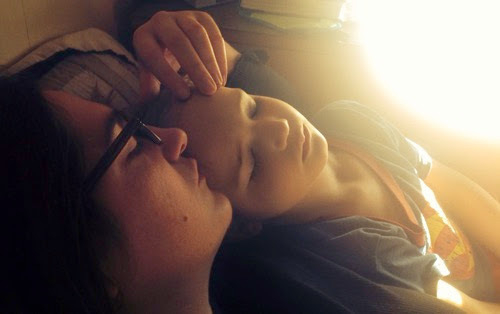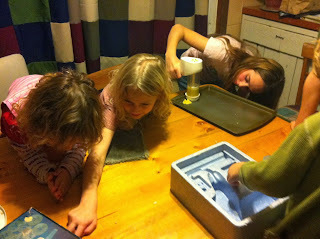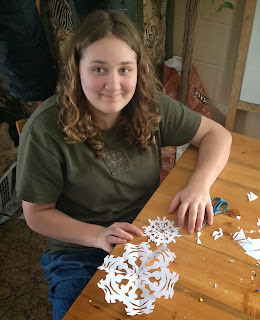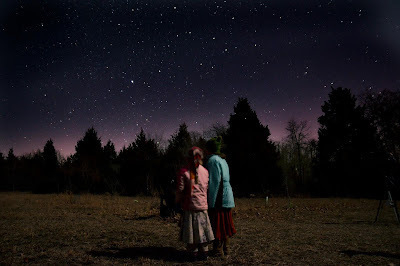Living Simply
Pigweed!
| Not the prettiest of plants but that's okay, the nutritional content and taste make up for it! This little grouping is growing very happily in one of our swales right between our rhubarb and blueberry. |
We have it growing in several locations around here and it’s no wonder. It self seeds readily and tolerates a wide range of soil. Well, we’ve got pretty nice soil and are happy to let it set seed. In fact, I’ll be doing my best to help it along by scattering seed in various places. The more of this the better!
Recycled Wood Shelving
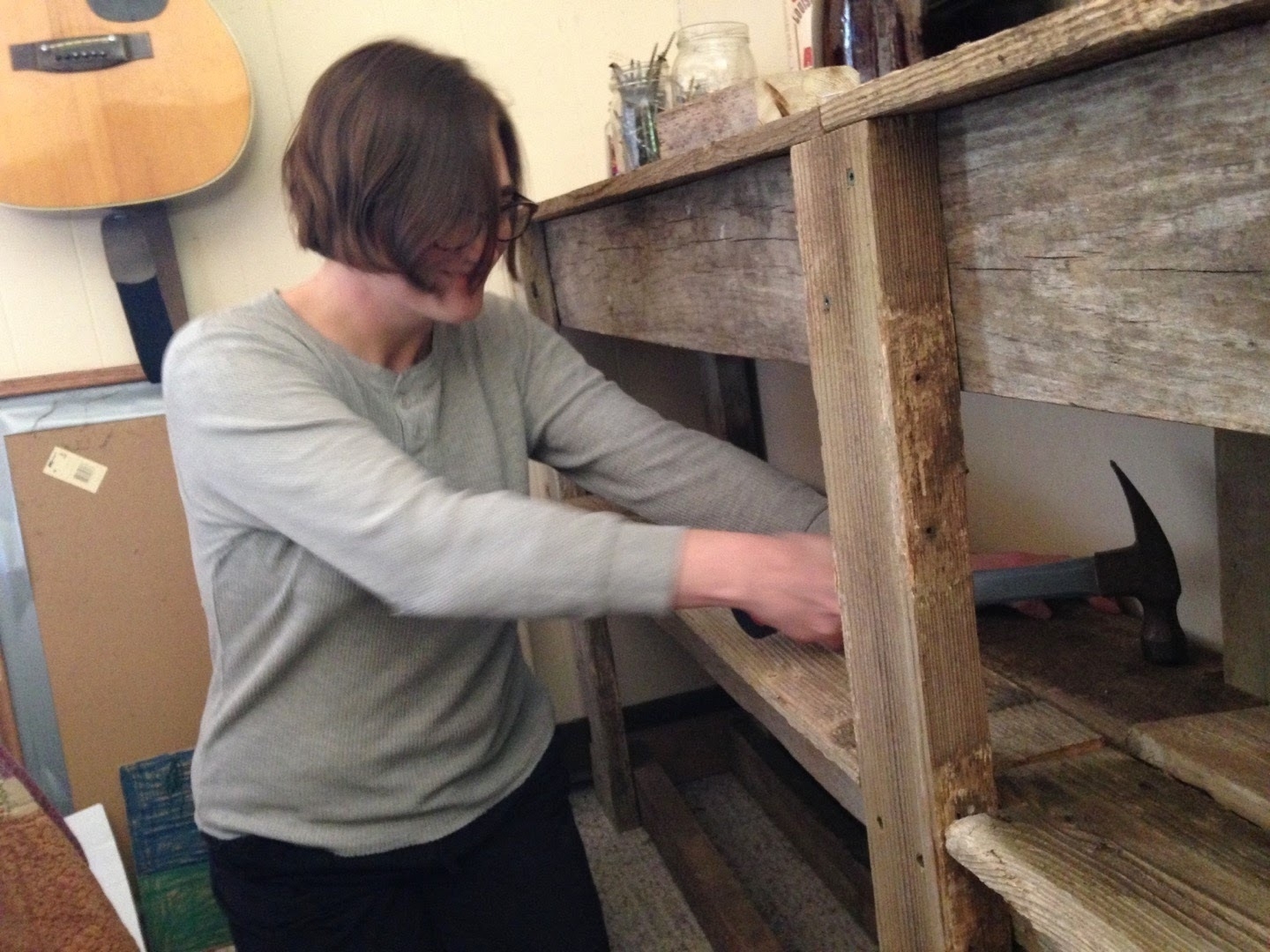 We’ve been wanting to better utilize one of the walls in our bedroom and finally got around to the project during a brief warm spell in January. The goal was rustic shelving that would hold books, satellite modem, and our flat screen. We had a stack of beautifully weathered old cedar wood that had previously been used in someone’s privacy fence. It’s been sitting outside for a while so we needed to use it soon if we were going to use it. It was perfect for our shelving.
We’ve been wanting to better utilize one of the walls in our bedroom and finally got around to the project during a brief warm spell in January. The goal was rustic shelving that would hold books, satellite modem, and our flat screen. We had a stack of beautifully weathered old cedar wood that had previously been used in someone’s privacy fence. It’s been sitting outside for a while so we needed to use it soon if we were going to use it. It was perfect for our shelving.
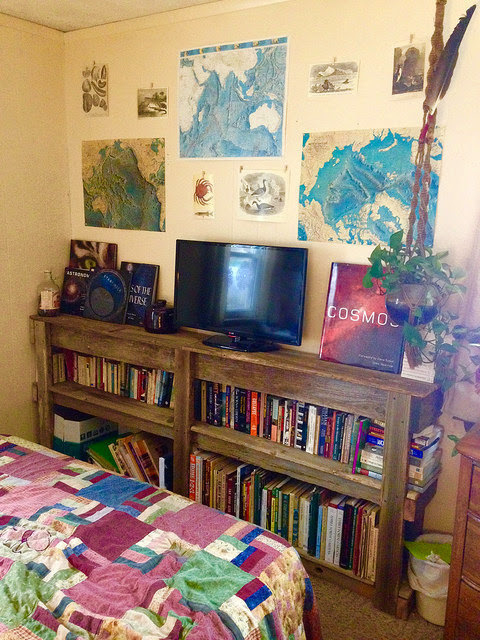 It was pretty straight forward. After disassembling the fence we discussed the consruction and came up with a list of lumber sizes. We cut all the pieces which was only slightly tricky because our recycled lumber needed to be mixed and matched a bit. The whole project took about 5 hours. The only cost? Screws which were also being recycled from an earlier project so getting their second use. Not too bad!
It was pretty straight forward. After disassembling the fence we discussed the consruction and came up with a list of lumber sizes. We cut all the pieces which was only slightly tricky because our recycled lumber needed to be mixed and matched a bit. The whole project took about 5 hours. The only cost? Screws which were also being recycled from an earlier project so getting their second use. Not too bad!
The final touch was a wall collage of old National Geographic maps and vintage nature journal sketches from this Flickr collection by the British Library.
Staying Warm
 There’s nothing quite like staying warm in the winter with wood. In the past I tried to cut and split what I needed but with the years my back has gotten increasingly cranky (as has Kaleesha’s). In particular cutting and splitting wood is a task that can easily put us in bed. That said, sometimes it just has to be done. If it weren’t for the pain it would be a nice way to spend a few hours outside with the kids. Even with the back pain we seem to be able to enjoy it a bit. Everyone working together makes for some sweet moments.
There’s nothing quite like staying warm in the winter with wood. In the past I tried to cut and split what I needed but with the years my back has gotten increasingly cranky (as has Kaleesha’s). In particular cutting and splitting wood is a task that can easily put us in bed. That said, sometimes it just has to be done. If it weren’t for the pain it would be a nice way to spend a few hours outside with the kids. Even with the back pain we seem to be able to enjoy it a bit. Everyone working together makes for some sweet moments.
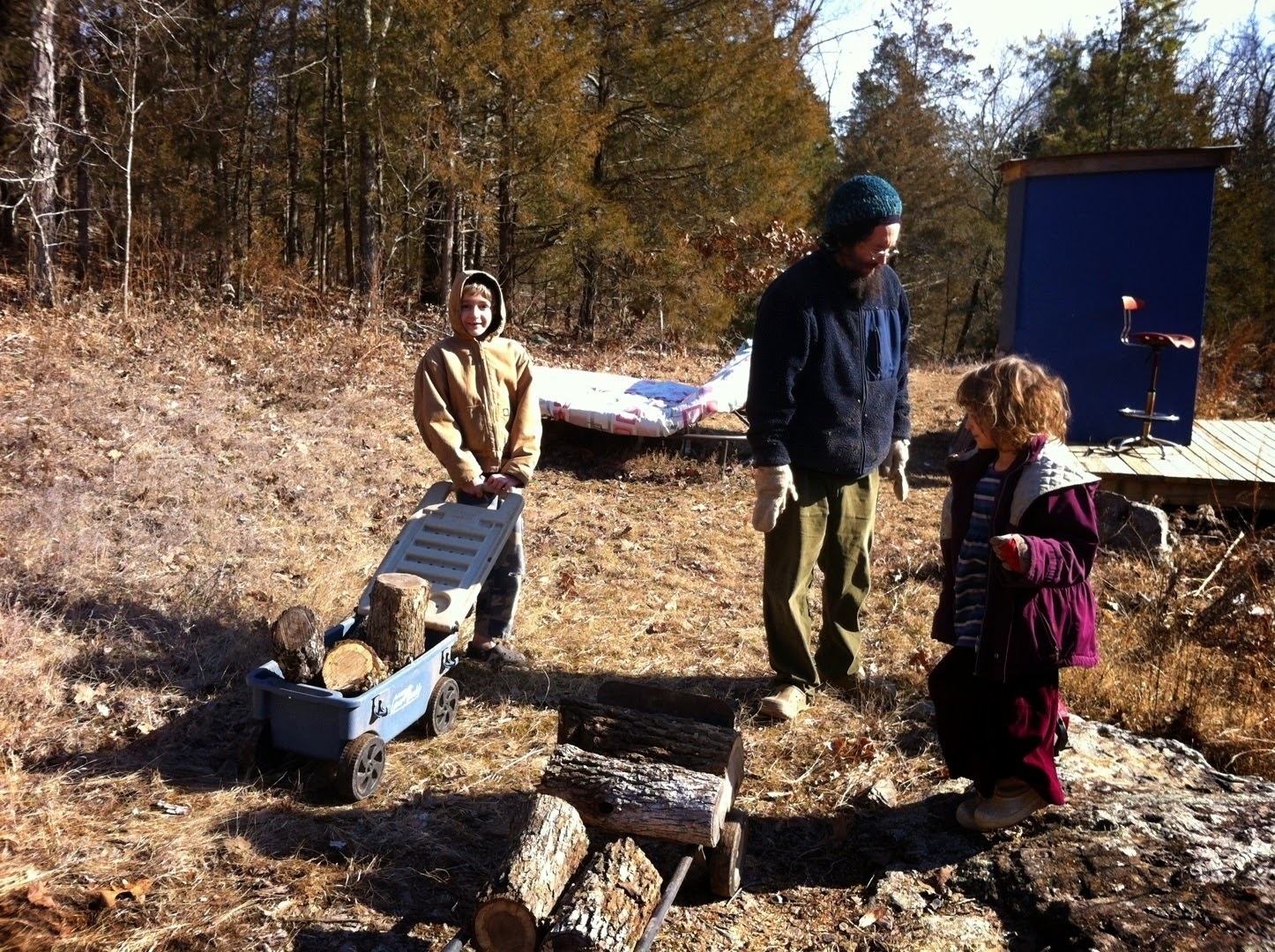 Luckily we had some wood left over at the top of the hill from our observatory project. Cut over a year ago it was perfect for splitting and has been keeping us warm for the past week. Royal and Little were especially helpful in transporting the wood down the hill, smiling and chit-chatting the whole time. Adorable.
Luckily we had some wood left over at the top of the hill from our observatory project. Cut over a year ago it was perfect for splitting and has been keeping us warm for the past week. Royal and Little were especially helpful in transporting the wood down the hill, smiling and chit-chatting the whole time. Adorable.
Little Brook has begun learning math!
Just another day in Wonderland
Skeptics on the Creek
Skeptics on the Creek at Make-it-Do Farm! Good food, drink and conversation. Missing in these photos are the kids who were upstairs all night playing D&D.
The Maker
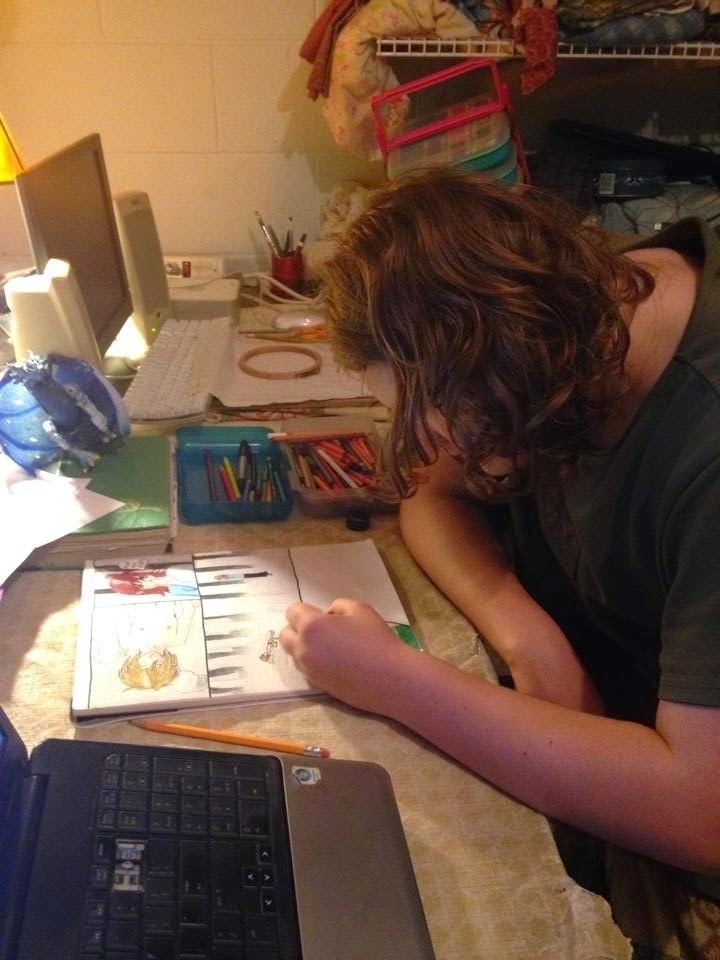 Farra loves to write and loves to draw so now she has started her first comic book. As she would say (in her best Spock voice): "It's only logical."The girl has talent.
Farra loves to write and loves to draw so now she has started her first comic book. As she would say (in her best Spock voice): "It's only logical."The girl has talent.
Wonderland
There are moments in life when everything feels just right. I'm not sure if those moments are happening all the time and it is just a matter of seeing them, recognizing them and acknowledging them or if it is the act of recognizing the potential of their existence that we help them into existence. Whatever the case may be, I feel fortunate to have chosen a life, created a life, in which such moments seem to come often. If I had to guess I suppose I'd say that such moments become more numerous the more we are able to slow down, the more we are able to be in the moment with those around us. We had such a night tonight here at Make-It-Do.
Dinner was unusual in that I missed it. We always make it a point to sit together for every meal. All of us. But tonight I slept through it because I'd been up late at the scope and because we had a long day in the car which left my back aching. I napped until Kaleesha woke me after six. By that time the kids had gone off to play in the woods. Kaleesha had made the two of us salads for dinner so we sat on the back porch to eat. The sounds of life went on all around us. The chickens and goats were doing their thing and off beyond the goat yard the kids were at the edge of the woods playing. So many sweet sensations all mixing together: the wonderful food, the cool and unusual July temperature, the sounds of children and farm and conversation between the two of us made for a wonderful start to the evening. Shortly after dinner we were separated for a bit as she took a call from her mom and as she often does while chatting on the phone, wandered around the house taking care of little chores. She took care of the bread dough she'd started before dinner and, not long after, she put the rising loaves into the oven the smell of fresh bread filed the house. The kids continued to play in the woods so I picked up my book on the Herschel Objects and started reading, alternating between the book and a few articles on the iPad. At some point I got up for a bit of coffee and decided to hang LED string lights on the back porch. It's something we'd talked about doing just the other day in preparation for company coming Thursday night, so I thought I'd go ahead and get them up. By the time I'd finished the task the sun had settled in behind the trees and the kids had returned from their time in the woods. There's nothing quite as sweet as these kids telling the stories of such evenings. They described the work they'd done in cleaning a little patch of woods they sometimes play in and showed me the fresh callouses on their hands. They were excited and very pleased with themselves.
The bread was out of the oven and I was having another mug of coffee when we'd decided it was dark enough to get everyone ready to walk up the hill to the observatory. We've not taken much time to get everyone up here for viewing since we built the observatory. Mostly that is due to the seemingly never ending streak of cloudy weather which has meant observing time has been scarce. In recent days a couple of the kids have expressed a desire for scope time, so we jumped at the chance to share a clear night with them. As an amateur astronomer one of the greatest joys is sharing the beauty of the Universe. There's nothing quite like the reactions one hears when someone sets their eyes upon Saturn or the great globular cluster of Hercules or any number of other beautiful objects. Sharing it with kids is even better.
 |
| The Tucker Creek Observatory. |
By the time we'd gotten the scope out it was just starting to get dark and Saturn was low in the horizon so I started with the beautiful ringed planet. Justin had the first turn and he seemed more interested than he's ever been. Most people, kids included, usually don't keep their eyes at the eyepiece long enough. I've noticed the same thing whenever I've taken a walk in the woods with others. More often than not, such walks seems to be a race to finish the walk with little time taken to really observe the details of everything on or near the trail. I suppose I'm not surprised. Our culture seems to emphasize quantity over quality, passive consumption over authentic engagement. This is a mistake, especially when it comes to amateur astronomy. Objects in the night sky are much better when viewed for a length of time. Our eyes take time to adjust to the dark and even after they are dark adapted more time looking through an eyepiece almost always allows for our brains to notice fine details.
Justin took his time. In fact, he seemed to be in no hurry at all as he focused on the planet.
“Do you see it Justin?”
“Yep.”
The scope moves easily and he has a tendency to bump in when he leans in, so I got on the ground while Kaleesha helped him at the eyepiece. From the ground I could look up the tube to the center red circle and keep the planet where it needed to be. Every 20 seconds or so we repeated the question to make sure he still had it in his view and each time he responded with “Yep.” He looked far longer than any of the other children; probably 2 minutes, maybe more. He was very attentive. Finally he pronounced, “Royal's turn!” and moved away from the scope. The kids all cycled through their turns at the scope, most of them offering some sort of excited acknowledgment of what they were looking at. From there we moved on to Mars which was just off to the west of Saturn. Royal requested that we look at the beautiful blue and gold double star Alberio in Cygnus. He remembered it from our very first time at the telescope in November 2012, so we moved to that next. From there we moved to the Ring Nebula and last the M13, the Great Globular Cluster in Hercules.
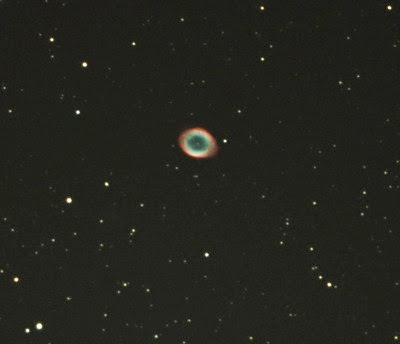 |
| The Ring Nebula image similar to that viewed in our 12" telescope. Our view has less color. |
The Ring Nebula, while not too flashy in the telescope, is a beautiful sight nonetheless. As with most astronomical objects the beauty is enhanced if some of the details are known. At the core of the nebula is a white dwarf star consisting of carbon and oxygen. Its mass is about 0.61–0.62 solar mass, with a surface temperature of 125,000±5,000 K. Currently it is 200 times more luminous than the Sun. Keep in mind that this is a star which is no longer in active nuclear fusion. It has exhausted its fuel and blown away the remaining gasses which form the ring nebula we see. The star is now just radiating heat and it is thought that such white dwarfs will do so for trillions of years. Source: [Wikipedia]
In contrast to the subtle beauty of the Ring Nebula, the Hercules Cluster, M13, is quite a sight and one of our favorites. Here's why:
Messier 13 contains several hundred thousand stars; some sources even quote more than a million. The brightest is the variable star V11, with an apparent magnitude of 11.95. Toward the center of M 13, stars are about 500 times more concentrated than in the solar neighborhood. While the probability of collisions between stars in such a crowded region is negligible, the night sky seen from a planet near the center of of this globular cluster would be filled with thousands of stars brighter than Venus and Sirius!
Unlike open clusters, such as the Pleiades, globular clusters are tightly bound together by gravity, and contain very old, mostly red stars. The age of M 13 has revised to 12 billion years - nearly as old as the Milky Way galaxy itself. Born before the Galaxy's stars had a chance to create metals and distribute them them in its star-forming regions, M 13's iron content relative to hydrogen is just 5% of the Sun's.
Source: Sky Safari App.
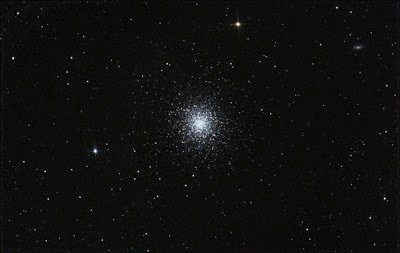 |
| M13 as it appears in our 12" telescope. |
It is a sight to behold. As the kids took their turns at the eyepiece on this last object I explained what they were seeing just as I had for the other objects. Justin, upon looking at the cluster simply said, “It's a galaxy!” We corrected him, knowing that while he may not understand the difference some of the other kids, Little Brook, Royal and Blue would likely pick up on it and would likely have a better understanding of the difference. There's something extraordinary about taking our time to explore the Universe with one another, especially when children are involved. Whether it is a globular cluster or a tiny frog, they are intensely curious. I continue to be amazed by the details they pick up on and the amount of information that they retain. While the youngest may not fully understand the difference between a galaxy and a globular cluster they certainly retain the information that they are different.
Just as exciting as our shared explorations is that they are actively investigating on their own time. The other day Little Brook saw a photo of a nebula as the kids were browsing through one of our astronomy photo books and excitedly proclaimed “That's the Horsehead Nebula!” This was something that she had learned on her own. Imagine a five year old learning to identify the Horsehead Nebula! Sometimes all I can do is shake my head and smile. As I sit typing this there are 3 day old ducklings happily chirping as they follow their momma just 10 feet outside my window. One room away Farra is working on some chain-mail armor and Blue and Little are speaking in very well done British accents as they play on the porch.
Yeah, I live in Wonderland.
Rainbows
This is one of the best things Kaleesha has written: Rainbows. I know I’m biased but really, this is so, so sweet. Read it.
YouTube Channel
I set up a YouTube channel a few years ago but never made it a point to post much. A couple months back it was pointed out to me that one of my YouTube videos had gotten quite a few views, 29,000+, and that perhaps I should invest more time in developing my channel. so, this is me putting in some time creating more video updates.
The funny thing is that I actually enjoy putting them together, its just something I need to work into my routine. I'm hoping to assemble 2 - 3 each month. Here are the first two, both are gardening updates. We've been busy with baby goats, spring gardening as well as putting up a raspberry trellis and a small duck pond.
Something Decidedly Different
These are children who have never believed in Santa nor have they ever celebrated Christmas. Their mother, now an atheist was, for 14 years, a Bible believer that actually read the Bible and came to the conclusion that the Christmas holiday was nothing more than a creation by Constantine to emulate a pagan holiday for the purpose of conversion. In any case, last year, as she says, she studied her way right out of the Bible to deism which then, after a few more months of consideration, was replaced with atheism.
And so, here we are, a happy and content family enjoying a beautiful winter day. Sure, we have some homemade cookies but those are made all year long not just around the holidays and we enjoy some of the holiday music as well. We’ll enjoy this day as any other with three healthy meals, chopping wood, playing blocks, doing a bit of homeschool, maybe some crafts later.
Do our kids lack? Do they feel they are missing out because they’re not getting a roomful of new toys? No, I don’t think so and I’ll illustrate with a little story which is fairly typical. Recently we had a couple birthdays and the girls were asked for a list of things they wanted. The list? Empty. When pushed to come up with a list one shrugged and suggested a coloring book. When pushed further they agreed that they could use some fabric, paint and a few other art supplies. This is the rule, not the exception around here. In general these are kids that are very happy that seem to be living very full lives. For the most part the kids here spend their freetime reading, playing, crafting or watching a couple movies on weekends. In general, they’re not staring at screens, not texting and not partaking of the mainstream culture.
I’d guess that were I to take at a look at the wish-lists of random children living in the U.S., be they birthday or Christmas, the lists would, in general be quite long. I’d also guess that the kids with fairly long lists would already possess a great abundance of fairly new toys and gadgets. This isn’t about proclaiming some sort of right or wrong way to live or raise kids. Not about a right or wrong way of spending December 25 or any other day of the year. Rather, it is suggestion that it is entirely possible to live a life which does not revolve around the hyper-consumption that seems to have become the norm in today’s America. It is also to ask questions: Are we and our children happier as a result of this greatly increased consumption? Are we even aware that this seems to have become the new norm? What is the relationship of our identity and sense of happiness to our consumption of material goods? Have we come to believe that such consumption, as a distraction, can serve as a solution to our problems?
Really, the questions around consumption and hyper-consumption are not new. There are many more questions that could be asked regarding the effects of a way of life based on hyper-consumption on our personal and cultural health. There’s nothing fresh here and many others have been asking the questions for a long time. Nevertheless we seem stuck in this cultural and behavioral rut and I don’t see it as something that is making us happy or as something which can be sustained on a planet which has reached its limit.
Carl's Birthday
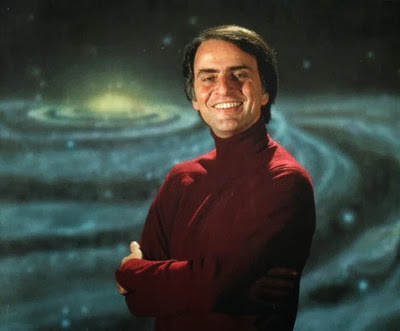
Yesterday was Carl Sagan’s birthday. I really should have celebrated with a night of star gazing but I was exhausted from a full day and a full week so I stayed inside. It seems fitting though that sometime around 3 am I awoke with thoughts of Carl, the Universe and my place in it. As my mind often does at those early hours (If I’ve been asleep in bed but stir from slumber) I began mulling over a variety of thoughts. Perhaps that’s why long nights at the telescope with views of distant galaxies or Milky Way globular clusters and nebulae are often such an interesting exercise in quiet contemplation. In any case, I was awake and pondering some time outside under the stars. Laying next to Kaleesha I caressed her neck, her back and her hips enjoying the warm coziness of the moment and her sweet sighs as she stirred to my touch. After a little while I decided I would get an early start to the day with a view of the stars, planets and the sunrise.
I layered up with clothes and ventured outside with my iPad and quietly walked up the hill with Murphy at my side. There’s something entirely comfortable about walking up a woodland trail with the stars peeping through the breaks in the trees above and a big dog like Murphy keeping you company. The stars this morning were not a disappointment. They never are. The sky could not have been clearer and in this part of Missouri they are very dark. Orion took my breath away as it hovered in the southern sky. It is in moments such as this that I am overcome with a blissful mix of emotions and thoughts, feeling a joy of being connected to the Earth as I look up with an understanding that I am from the stars. That we, that all of this, is of a Universe which is bound together even as it is expanding further apart.
One of my thoughts this morning, in bed and now carried with me as I walked up the hill pertained to how it is that so much of our lives, in the America of 2013, are spent in pursuit of the next big thing and in particular, then next big shiny thing. Shiny things. It seems we modern humans, at least those of us who live in the “wealthy” nations, have become obsessed with trivial entertainments. From the Super Bowl to sitcoms to eating out to shopping, all the while dutifilly posting Facebook “Status” updates, we keep ourselves busy with our various forms of consumption and our “sharing” of it. How much of our mental and emotional energy is bound up in the aquisition of wealth and material objects. Bigger homes with nicer furnishings, name brand clothes covering overly cleaned and perfumed people driving new cars to jobs which may or may not be satisfying but which are required to maintain the lifestyle and the seeking of status that often comes with it. iPhones and iPads, texting while driving to the next afterschool sporting event, in the presence of others but rarely actually communicating with them.
This morning I think of Carl and his efforts to push humanity forward in its exploration of the Universe and it’s understanding of that Universe. I think of his warnings about our behaviour towards one another and towards the planet we share with not just other humans but with a great multitude of other species. I’ve spent most of my adult life concerned about problems such as climate change and have made a fairly consistent effort to communicate those concerns with others. I’ve made many of my life decisions based upon my understanding (limited though it is) of humanity’s effects on our planet and so this morning as I looked at our Milky Way neighbors I could not help but ponder Carl and what he sought to communicate.
If we humans are ever able to leave our planet for the purposes of living elsewhere it is a long way off. For the forseable future the Earth is our home and we are not doing a very good job of taking care of it. In this past year of looking up at the night sky I have, more than any other time of my life, come to appreciate the beatuy of the Universe. I have also developed a new-to-me understanding or perspective of our home planet in the context of the Universe. With each day the evidence grows that there are likely billions of planets in just our own Milky Way galaxy that might support life, planets that inhabit the “goldilocks” zone around their respective stars. There are billions of galaxies and, in light of these numbers, my doubt about life elsewhere in the Universe continues to shrink. And though we know that life on Earth has an expiration date based upon the life cycle of our sun I can’t help but wish that we humans might make the effort to live as though what we do matters. Perhaps our existence is meaningful because of this known expiration not in spite of it. Our species’ existence is likely to be ephemeral in the grand scheme of things but is that any reason to live without care?
Before the sun began to lighten the sky I pointed the telescope to the north, to Ursa Major and there I found the two galaxies, M81 and M82, collectively known as Bode’s Nebulae. The photons from these distant galaxies traveled for more than 12 million years before finding their way to my eyes. I spent a good long while looking at these two as they are fairly close and offer more detail than more distant galaxies. What life might exist there on the billions of planets that likely orbit billions of stars? Next I looked at Jupiter and then Mars, just a stone throw away by comparison. The sunlight reflected from these two planets traveled to us in just minutes. Current missions to Mars are looking for evidence of past life there. Jupiter’s moon Europa has an atmosphere which consists primarily of oxygen and a smooth icey surface which may well have liquid oceans beneath. Oceans that may support life. As the sun began to brighten the sky I aimed the telescope at the Orion Nebula for one last look.
After putting the scope away I stood for a few minutes on the soft layer of cedar mulch that covers the boulders that overlook the shut-ins of Tucker Creek. I spent a few minutes observing the rushing water and rich textures of the landscape. The trees of this south-facing hill are now nearly shed of all their leaves but are covered in thick layers of lichen. The rocks too are covered in patches of lichen and moss. Even in the chill of a fall morning life is abundant.
As I walked down the path, Murphy again at my side, I could not help but overflow with joy at the crunching of leaves underfoot and the gold light of our sun filtering through the mostly bare branches. There is something very enjoyable about acknowledging and being mindful of the sun not just as the sun but as OUR STAR. At the bottom of the hill our little homestead was stiring with the morning. Chickens, ducks and a goose were all awake and begining their business as were the goats. Soon I would sit in the warmth of the house and write at the kitchen table to the sounds of children pitterpattering above.
Weeping to the Cosmos
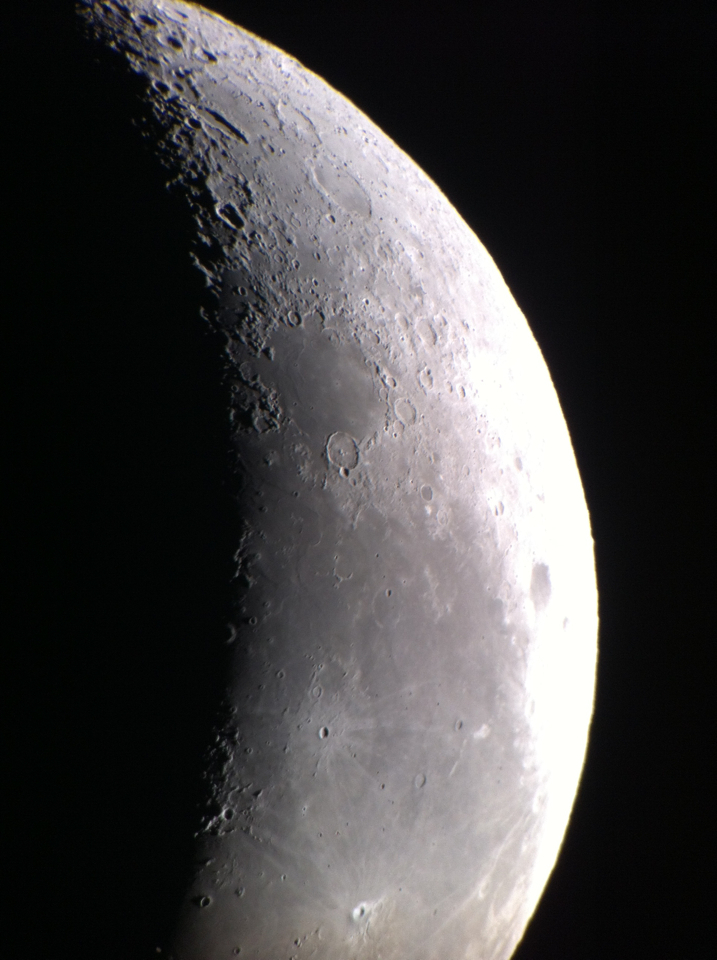
Moon photographed with iPhone and Z12, February 5, 2013
We had a fantastic night last night in our group observation for the Eastern Ozarks Astronomical Society. It was the usual crew plus a couple of newbies. Of course Russ and Karen were there. Kaleesha made it back for her third time at the scope and with her Blueberry and Seth. It was Seth’s first time and he took to the scope very naturally. Our new Farmington astronomer friend Mark made it for the second night in a row and though we were clouded out first night, last night we had perfect skies from sunset till sunrise. It’s always nice having new folks in attendance. We discussed open clusters, the use of the word nebula in the initial naming of galaxies which, at the time, were not known to be galaxies! We also went over star hopping with the 8" dobsonian with a red dot finder and folks got a chance to find a few Messier objects. Lots of fun! We also saw a very nice green fireball!
After most folks left Russ and I had an excellent conversation about the scientific method and the importance of skepticism. After that I took a brief dinner break and then set back out for some solo galaxy observations from my Herschel 400 list.
After about six galaxies I took a break to just look up with my eyes and the beauty of it was just too much. I suppose all there is to say about it is that I cried and I kept on crying. I thought I’d finished and then I cried more. No doubt, a part of what was going on was that I’d set a particular song on repeat, The Cinematic Orchestra’s song To Build a Home and I’m fairly certain that it was the song, combined with what I was seeing, that sent me over the edge. To be honest there have been several such moments during my nights at the scope over the past few months. I’m usually able to control it but sometimes it is good to just let go and accept it.
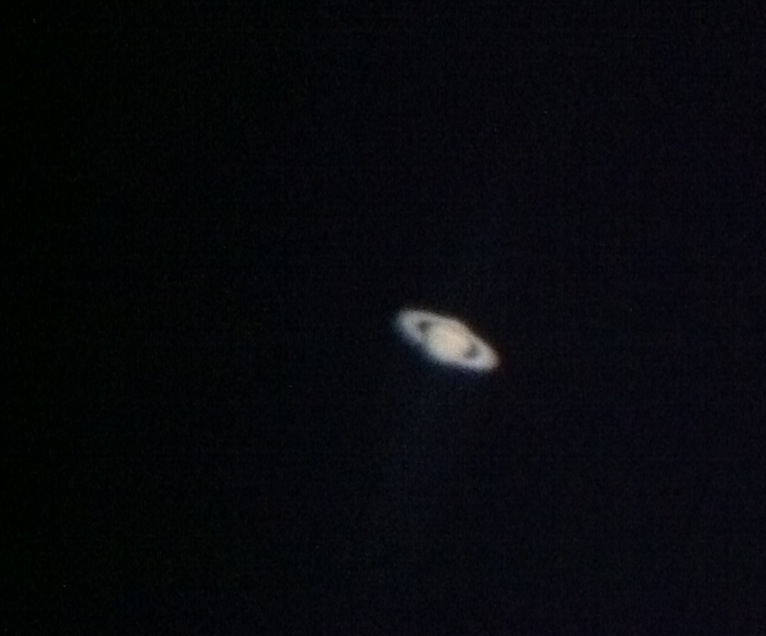 Saturn photographed with iPhone and Z12, February 5, 2013
Saturn photographed with iPhone and Z12, February 5, 2013
It’s not the first time I’ve had the sensation, a sort of heightened alertness and emotional intensity that just comes in like a slow motion wave. Usually it’s just the result of really being in the moment, be it under the night sky looking at stars or standing in the cold watching my breath seemingly frozen midair or any number of other similar moments. It is as if time slows down and in those moments I am not just seeing what’s around me, but being in what is around me. To put it simply, it seems like a convergence of emotion and intellect that results in something not quite our normal day-to-day experience, something overwhelming.
I’m guessing most people have these moments at various times in their lives… I certainly hope so. I’ve mentioned to a few folks recently that I feel like, more often than not, I exist in this sort of low level bliss. In part I think it comes with this kind of simple life. I own so little and live in such a small space that my life is not about owning but about being, about experiencing… searching and exploring. Our lives are short and so it makes sense to me to live it as my life but to do so in constant connection and ever deepening relation. I made a choice to never have children so being connected means something different for me. It’s frogs and stars, geese and planets, friends and family, it is belonging to life and to the earth and to this cosmos. When you belong you are free.
Eastern Ozarks Astronomy Society First Night!
My friend Russ Middleton got some great photos and one of our new members, Kaleesha, and her girls had a look at a nice variety of nebulae: Orion, Pac Man, Eskimo and M1, the Crab. We also took a look at Jupiter and ended the group viewing with Bode's Nebulae, M81 and M82. Lots of great astronomy talk about the Cosmic Microwave Background, the Bing Bang, and how astronomers (and science in general) come to know things through the scientific method.
After everyone left I warmed up inside for a couple hours and went back out after the moon set. I logged 13 galaxies, a planetary nebula and a globular cluster, M68. Five of those were Messiers bringing my total on that list to 103, just 7 more to go! Messier 104, the Sombrero, was really impressive and with averted vision I was able to make out the dust lane. M68, was really beautiful with many of its stars nicely resolved. I also added nine more to my list of viewed Herschels, bringing me up to 241 out of 400.
The last object viewed from 4:20-5am was Saturn. This was, by far, the best view of the planet I've ever had in my life and honestly, I think I could have cried but it would have ruined the view so I didn't let it happen. It was so otherworldly, and yet, so familiar an image. Viewing Saturn is always special but when it is so perfectly clear, it can be much more.
I saw at least 5 of the moons as well as the Cassini Division in the rings, a first for me. Also saw clouds/color bands, another first for me. Sometimes language fails me.
I can think of no better way to spend a night than this.
Second night with the Z12
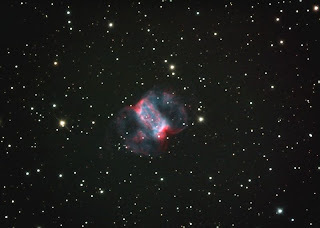 |
| Little Dumbbell |
There were several nice open clusters in the constellation Monocerus and a whole slew of galaxies in Leo. 14 objects knocked off my Herschel 400 list plus just for fun looks at Andromeda, Jupiter and the Orion Nebula. Almost 7 hours, 21 degrees when I came inside and started a fire at 2am! A great night!
12" Zhumell Dobsonian Review and First Light
 |
| Pardon the rope, the Telrad was not permanently attached at the time fo the photo! |
The scope arrived in good shape in undamaged boxes. I had it put together in an hour and that was taking my time. This is a huge scope for one person to safely maneuver. I'll be happy to have it in a permanent location with shed that will get rolled back during use.
Collimation before first light was a bit tricky. I'd read that the laser collimators that ship with these are out of collimation themselves and are of no use until they are collimated first. I set about doing that but adjustment screws are of a size (allen wrench) I do not have. Luckily my observing buddy Russ had his. Getting the secondary aligned was easy enough. The primary mirror, on the other hand, not so much. It seems that the tension springs in the adjustment bolts are pretty weak. As I turned them this way and that it became clear that I was going to have a hard time getting the mirror where it needed to go. Then it occurred to me that the lock screws, while not intended for adjustment, often do effect the mirror when tightened down so I tried turning a them a bit and presto, I had a collimated mirror.
This is a big mirror that will often need cooling down which is why they include a fan. I have not used it yet because I had it out in the shade on the first day and in the well house the second day so it was cooled off and ready to go at dark.
A few words about the hardware on the scope before I delve into what I saw with it. Everything seems very solid. I've not used the finder scope yet because I ordered a Telrad and have used it both nights. That said, the finder seems decent in terms of construction. The big plastic cover for the OTA (optical tube assembly) is a pretty loose fit so I'll have to do something about that. Of course the stand is particle board like all of these mass production units but seems solid enough for now. Movement of the scope is very smooth and it is very well balanced. I WILL upgrade to a home built birch plywood stand at some point. All in all, the scope seems very well built. I've encountered no problem other than the above mentioned weak tension springs on the collimation screws that I'll replace and the loose cover. As you can see from the photo, this is a huge scope and not something I want to move much.
The dual-speed Crayford focuser is very smooth and a nice upgrade over the focuser on the XT8. Being able to fine tune the adjustment is a very nice benefit of this focuser.
First Light for the new scope was Friday night and it was perfectly clear for it! My intent was to spend some time just getting familiar with the bigger scope and compare some of the views with what I've seen with the 8". There's no doubt it is impressive.
First object viewed was Jupiter and it looked great. The main difference, given good seeing conditions, is a sharper image. The 8" struggles with the 5mm EP but provides a fairly crisp image with really good seeing conditions. The 12" provides an even sharper image with a few more details in the cloud bands and also seems to have a little more tolerance of poorer conditions though I won't know for certain until I've used it more. Of course the same eyepieces also provide higher magnification due to the different focal length. The 5mm needed for detailed planetary viewing gives me 240x in 8", but 300x in the 12". So, not only is it a sharper image but it is also more magnified. Even better, I could, push it to even higher magnification if given the right eyepieces/barlow whereas 240x is the upward limit for the 8".
Next up for comparison was M31, M32, M110: The Andromeda Galaxy and it's satellites. This is a big and very bright object so what I was hoping for was some detail. With the 8" I get a big and beautiful view but no detail. With the 12" I am seeing some structure. It is especially noticeable with the 11mm Explore Scientific 82 degree (provides a wider field of view than standard lenses). At that level of magnification I am seeing a smaller picture but I do see the dust lanes which I don't think I'm seeing at lower magnification. In all the EPs the 3 objects are beautiful and the more faint M110 is much more defined and easy to see.
Next on the list, the Orion Nebula which never disappoints! In the 8" the nebula presents a fantastic view and in the 12" it is a fantastic view. More detail is visible and some of the dark areas are more pronounced. I'll have to spend more time observing before I can offer any more detail.
Now we are getting closer to those things which I expect will really benefit from the 12". Specifically, globular clusters, faint nebula, and distant galaxies. A great example would be something like NGC 2158 which is very rich open cluster in Gemini which almost seems like a loose globular cluster. In the 8" it presents as a nebulous sphere with little to no resolution of stars. In my first attempt to see it back in September I failed with the 8" due to deteriorating atmospheric conditions. The second attempt the next night was a success but the view provided little detail. By contrast, the 12" presented this cluster as very easy to see and with much greater detail as many stars are resolved. Through the 12" this cluster of stars is now exactly that, a cluster of stars and not just a nebulous sphere.
My next target was the Pacman Nebula, NGC 281 in Cassiopeia. With the 8" I had no success finding it even with the NPB nebula filter. With the 12" it was easy to see.
After that, a trip to Bode's Nebulae, two easily visible galaxies in Ursa Major. These are easy to find, I was hoping for greater detail. Unfortunately I didn't get much but more than likely that was due to my not taking the time. The night was getting on and I wanted to get some of my remaining Herschel 400 so this is by no means conclusive. I fully suspect that when I revisit and spend more time on these I will indeed see some new structure.
Last on the list were my remaining Herschel 400 galaxies in Ursa Major, 11 to 12 magnitude. While the 8" would make these visible they are often incredibly faint. With the 12" they were easy to find with little to no effort... it was so easy I almost felt like I was cheating! They don't provide much in the way of detail but certainly more than is visible with the smaller scope. I'm sure I'll have more to say about viewing these fainter objects as I spend more time with the Z12. Suffice it to say that the light gathering capability of a 12" scope is fantastic.
I'd intended to offer up the second night's viewing but I'm going to save it for the next post as this is getting quite long! Stay tuned.

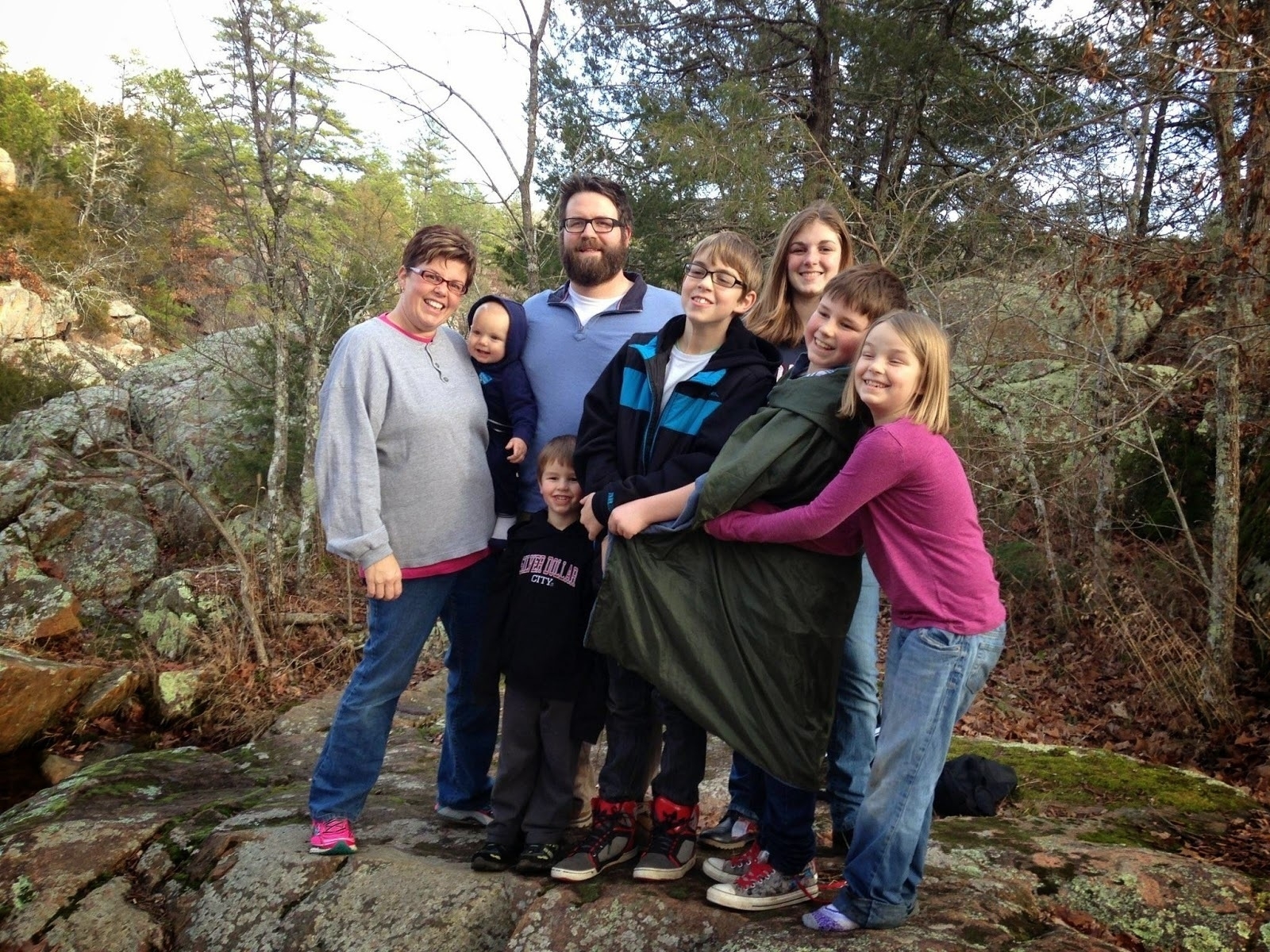
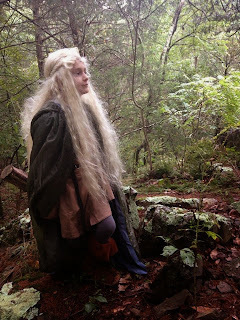
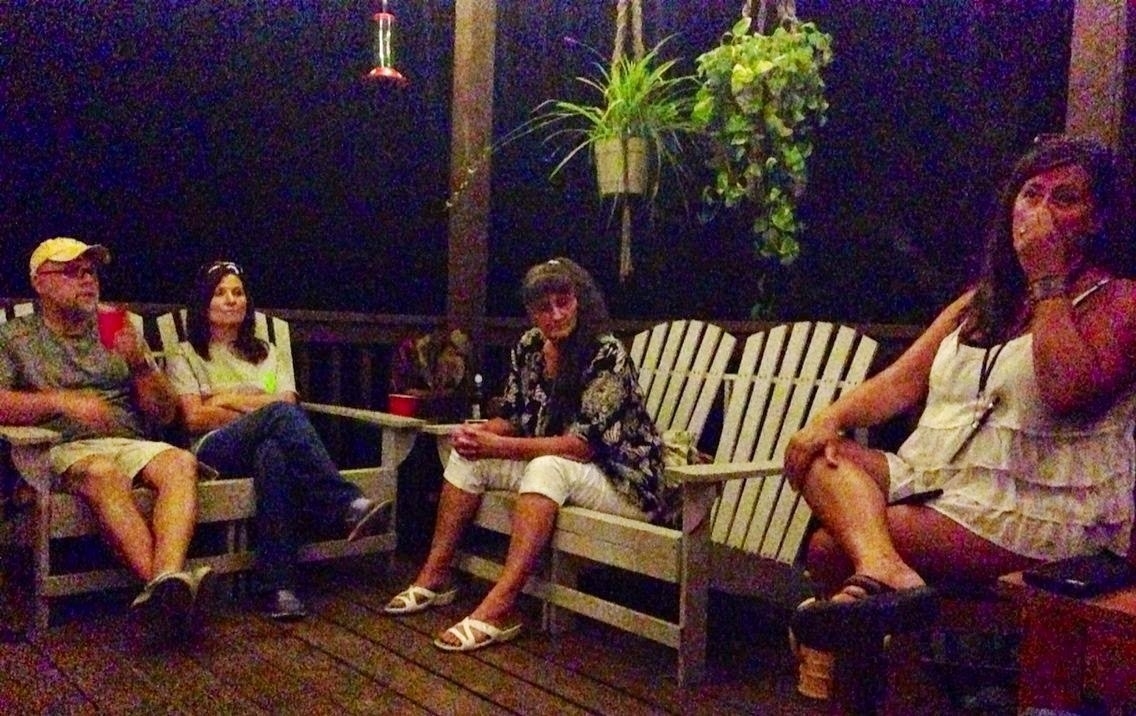

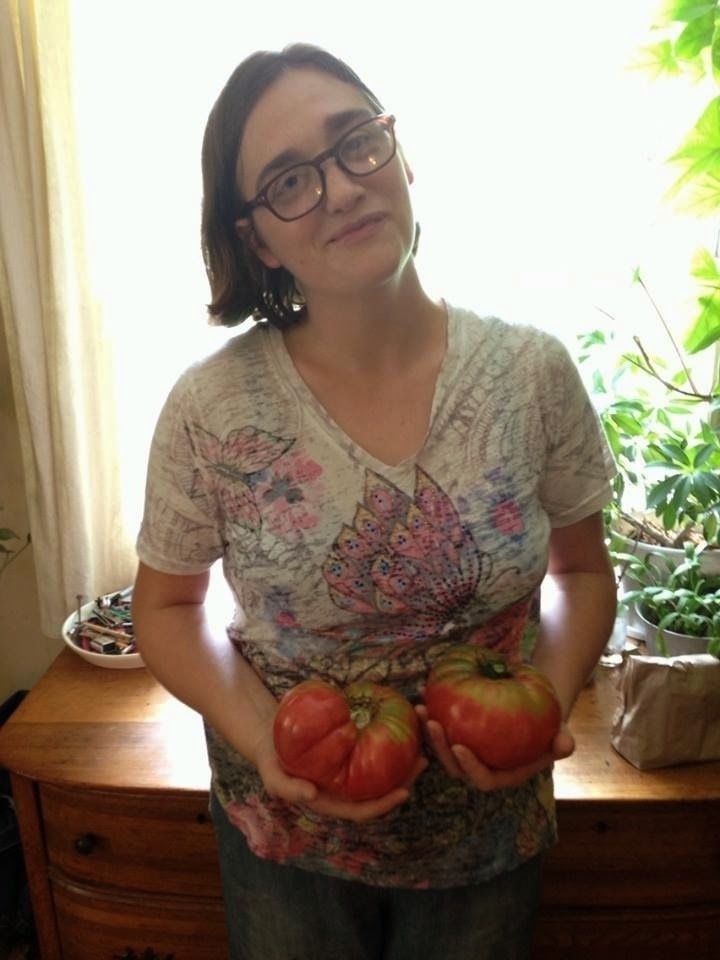 Big tomatoes! These are some amazing plants we have this year! We’ve got great soil which we’ve made better with plenty of composted goat manure and hay. Really good stuff. No sign of tomatoe hornworms yet but I’m sure they’ll show eventually.
Big tomatoes! These are some amazing plants we have this year! We’ve got great soil which we’ve made better with plenty of composted goat manure and hay. Really good stuff. No sign of tomatoe hornworms yet but I’m sure they’ll show eventually.